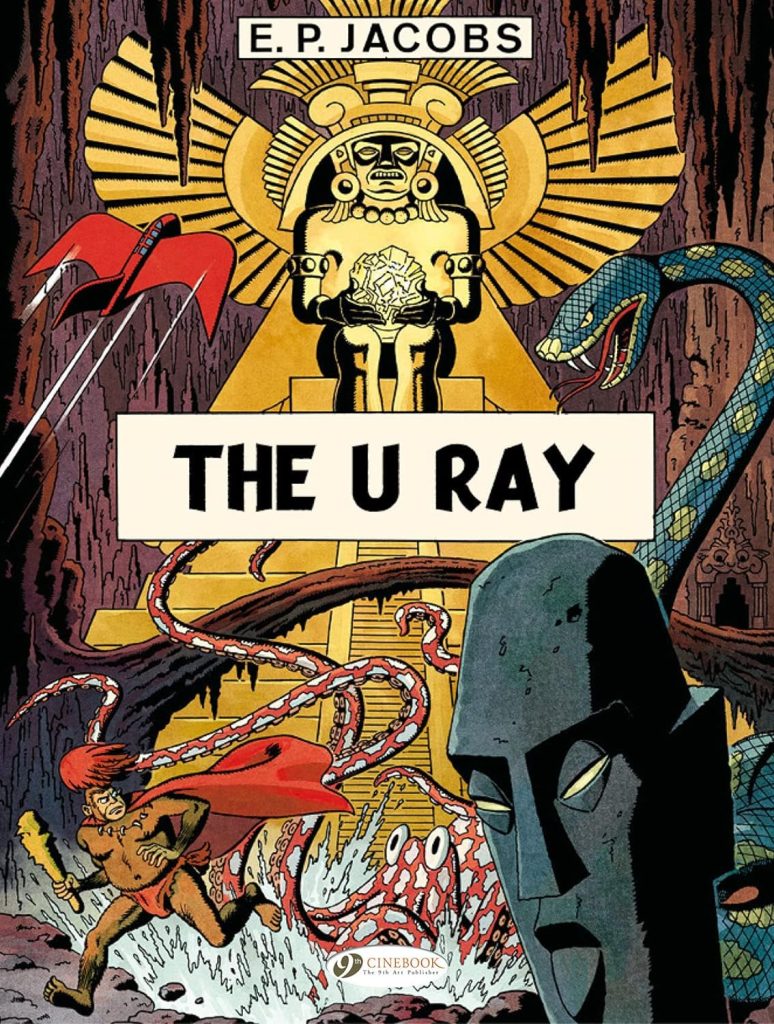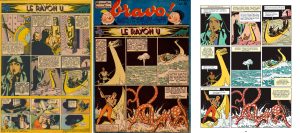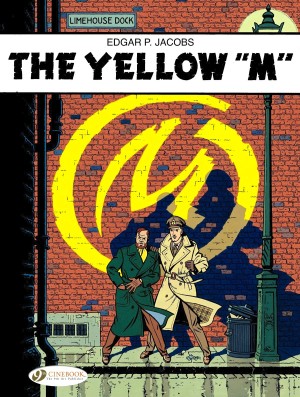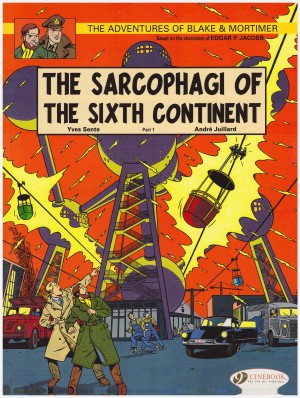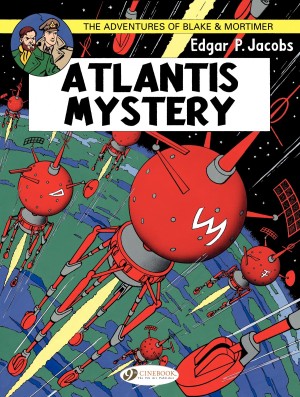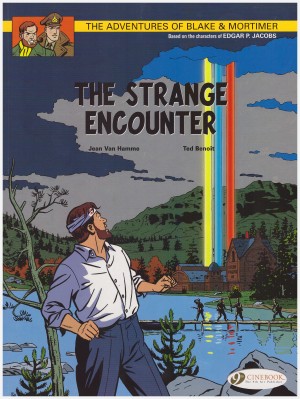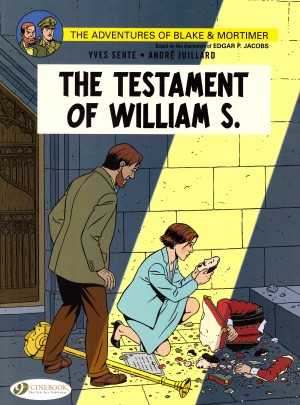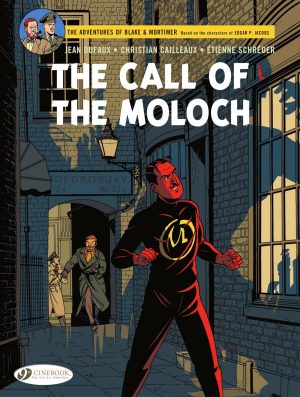Review by Woodrow Phoenix
Edgar P. Jacobs’ position atop the Pantheon of European comics creators is forever assured thanks to his classic series The Adventures of Blake & Mortimer which he began in 1946. The dashing British heroes weren’t his first creations, however. Four years earlier, Jacobs was working for a weekly children’s magazine called Bravo! that reprinted American comic strips in French. When all foreign content was banned by the Nazis, he was commissioned to continue Alex Raymond’s Gordon L’Intrépide (Flash Gordon) strip by imitating Raymond’s style as closely as possible, and then to create a similar kind of adventure serial to replace it.
Le Rayon U (The U Ray), began appearing in Bravo! in 1943 at six panels a week for 14 months, and was a big success. Jacobs went on to other things and it was not until 1974 that he published a book collection, in substantially reworked form. The six-panel pages were rearranged into nine-panel pages, the boxes of descriptive text were converted into captions and speech balloons, parts of the linework were redrawn, and the strip was recoloured by Bruno Tatti. It has taken another fifty years for this album to be published in the UK, expertly translated by Jerome Saincantin, and finally all of Jacobs’ work is available to English readers.
The U Ray is set in the same kind of decorative ahistorical retro-future as Flash Gordon with very similar characters and events; grand imperial palaces and baroque costuming for blonde heroes, dark villains and strange uncharted territories filled with oversized monsters and mysterious forces. The two nations of Norlandia and Austradia are locked in a power struggle and the brooding and brilliant Professor Marduk has invented a laser-like device that will give Norlandia the upper hand: the U Ray. However, it needs a rare element called Uradium to power it. An expedition led by famous explorer Lord Calder sets off for the volcanic archipelago where the ore might be found, but Austradia has a saboteur hidden among his party and soon they are stranded in a lushly overgrown lost world of dinosaurs, giant snakes, ape men and other deadly menaces.
All the distinctive elements of Jacobs’ narrative style are already in place in this adventure; the gorgeous compositions, breathless pacing and layers of detailed, intricate plots that lurch from one incident to the next in a non-stop series of hazards, disasters, and certain death scenarios drawn for maximum visual spectacle at all times. The frustratingly overwritten storytelling is present too, driven by the necessity for Jacobs to both resolve a cliffhanger and introduce a new complication in six panels (or fewer) per episode. This makes for an almost comically overwrought reading experience. The protagonists barely succeed in despatching one threat before they are instantly menaced by another, and they have less depth than the paper this book is printed on because there’s no time or need for them to be anything more than instantly recognisable ciphers. It’s not entirely fair to apply modern sensibilities to a simple pulp adventure serial from eight decades ago that was expected to be read once and never seen again, and by those standards The U Ray succeeds in keeping a casual reader engaged all the way to its high-stakes finale. Fans of period adventure will enjoy it.
The Fiery Arrow, a sequel to The U Ray was published in 2023 from the team of Jean Van Hamme, writer of The Francis Blake Affair, one of the best new books continuing the Blake and Mortimer series, and artists Christian Cailleaux and Étienne Schréder.
